Traditional sweet scone recipe, jewelled with glace cherries to make the best Cherry Scones ever. With lots of tips and tricks for the perfect scone.
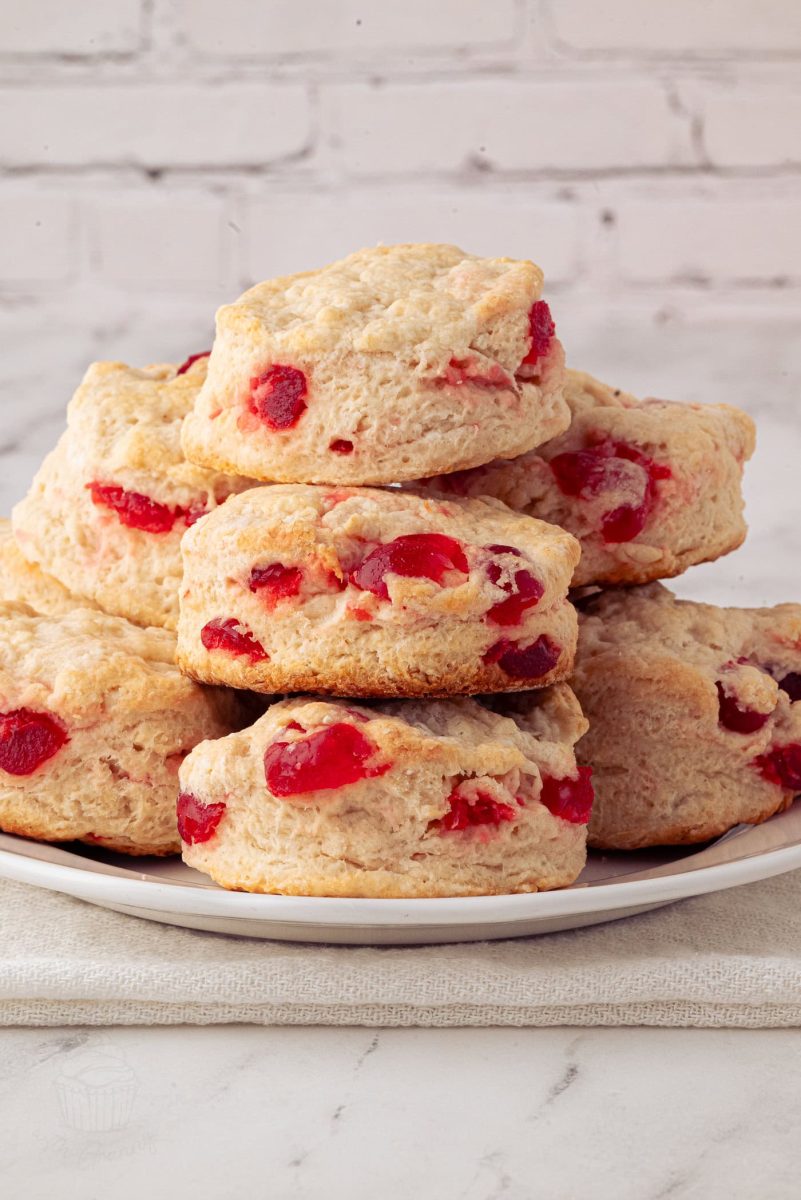
Scones will forever remind me of my first job.
It was a little café-come-florists and I was a waitress at age 15, working for £3.50/hour. Alongside countless cappuccinos, lattes and Americanos, the most popular order was Cherry Scones.
I learnt a lot from that first job. Mostly, I was a terrible waitress, something I vowed never to work as again. I also quit when I got my lip pierced, and they gave me an ultimatum of taking it out or not coming back. I chose the latter. But that’s a story for another day!
This café was known for its scones, however. Scone and a coffee was an order I would take down numerous times a day, with cherry scones always being the favourite. Back then, I preferred a plain scone or, at push, a fruit scone. I had grown up being used to giving my Dad any glacé cherries on baked goods, finding them too sweet and chewy. It’s fascinating how tastes can change like that as we grow!
However, when my kids started going to a local soft play on the regular, I found myself opting for my own regular order of a scone and a coffee diet coke. I’m not sure why I suddenly started opting for cherry scones; perhaps there was a day when it was all that was available, but I quickly found myself choosing them over any other scone offerings.
I can now confidently say that cherry scones are my favourite scone by a long shot, unless it’s fruit scones that Granny has made. Or a cheese scone on a cold day. Although plain scones are good too, especially with lots of butter…
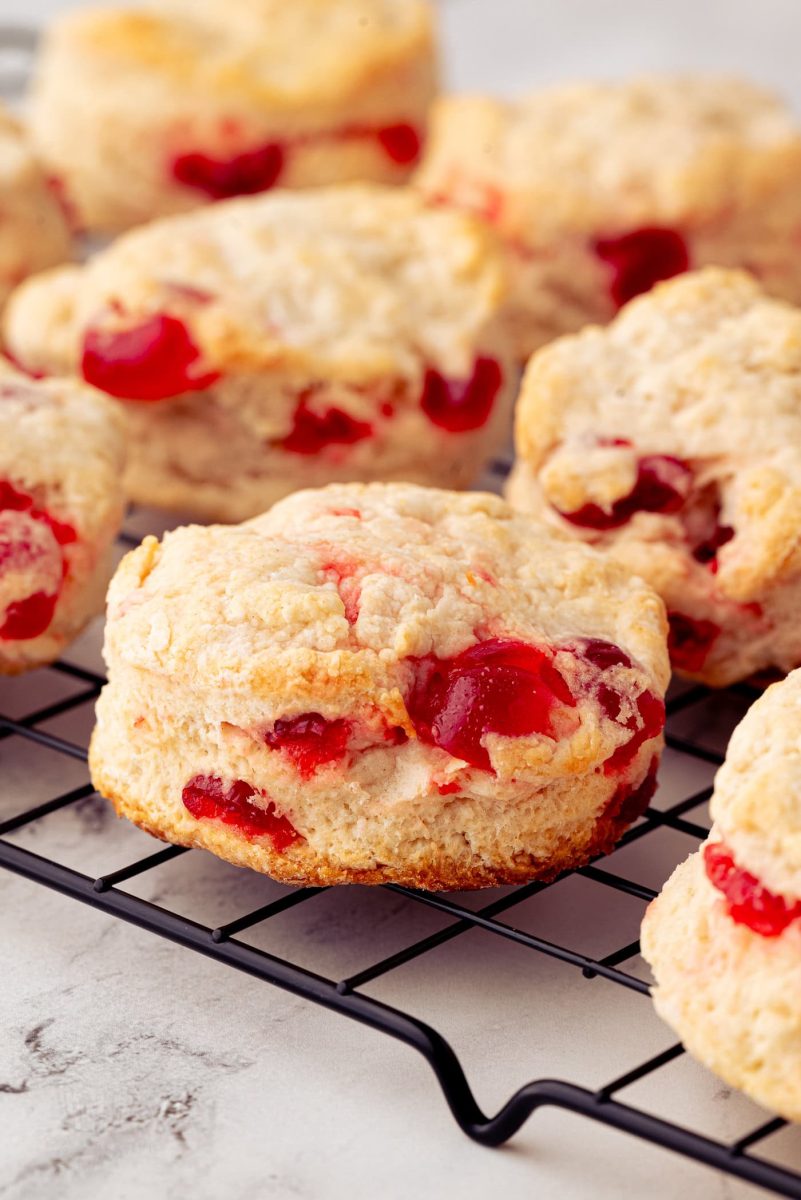
Ingredients:
Self-raising Flour
Scones are generally quite dense in texture but there are a few elements in the ingredients that help prevent them from being like biting into a rock. One of those is the raising agents. Self-raising flour already has a raising agent incorporated…as the name would suggest.
Baking Powder
As well as the raising agent in the flour, baking powder adds a bit of lift to scones.
Baking powder is a convenient choice as it is a ready-mixed leavening agent, generally made of bicarbonate of soda and cream of tartar (usually some cornflour too). In fact, our Fruit Scone Recipe simply uses a combination of bicarbonate of soda and cream of tartar, as opposed to baking powder.
Caster Sugar
In terms of scones, Cherry Scones would fall into the “rich scone” category. Traditionally this would also mean the addition of an egg alongside the sugar, however in this recipe the caster sugar is all that is called for.
Margarine or Butter
In terms of flavour, butter is always king when it comes to baking scones. However, when it comes to texture, a decent block margarine can be just as good. You want your butter/margarine to be cold though, as this will allow you to crumble it into the flour & sugar without it turning to mush; instead you want it to make a sand-like consistency. It is these little “grains” of buttery sand that will melt during baking, leaving a beautiful air-pocketed texture within your scones.
Milk
The liquid that brings it all together. You can use whichever milk you prefer, but a full-fat milk produces the richest scones. Dairy-alternative milks also work great in scones, with soya being my personal favourite.
Yoghurt
Not a traditional addition for scone recipe purists, however the choice to add yoghurt to your recipe goes beyond taste – more-so, it is science! The acid in the yoghurt reacts with the alkaline in baking powder, causing a chemical reaction. For those like myself who never excelled in chemistry…it basically makes some bubbles in your batter and in turn, an even lighter textured scone.
The choice of yoghurt is yours however. A plain yoghurt is great, as it a soya yoghurt or a coconut yoghurt (what is used in these photos). Generally speaking, you want to use a yoghurt that isn’t too sweet or flavoured.
Common alternatives that can be used in the same way as yoghurt include buttermilk and sour cream.
Glacé Cherries
The star of the show in these Cherry Scones is of course the cherries! Glacé Cherries are favoured in baking due to their sweet taste and candied texture.
Some cakes that involve cherries will call for tossing them in flour to avoid them sinking; don’t worry about this in scones though, they will be coated in the flour when added to the dry ingredients and the dough is not thin enough to allow them to sink during baking anyway.
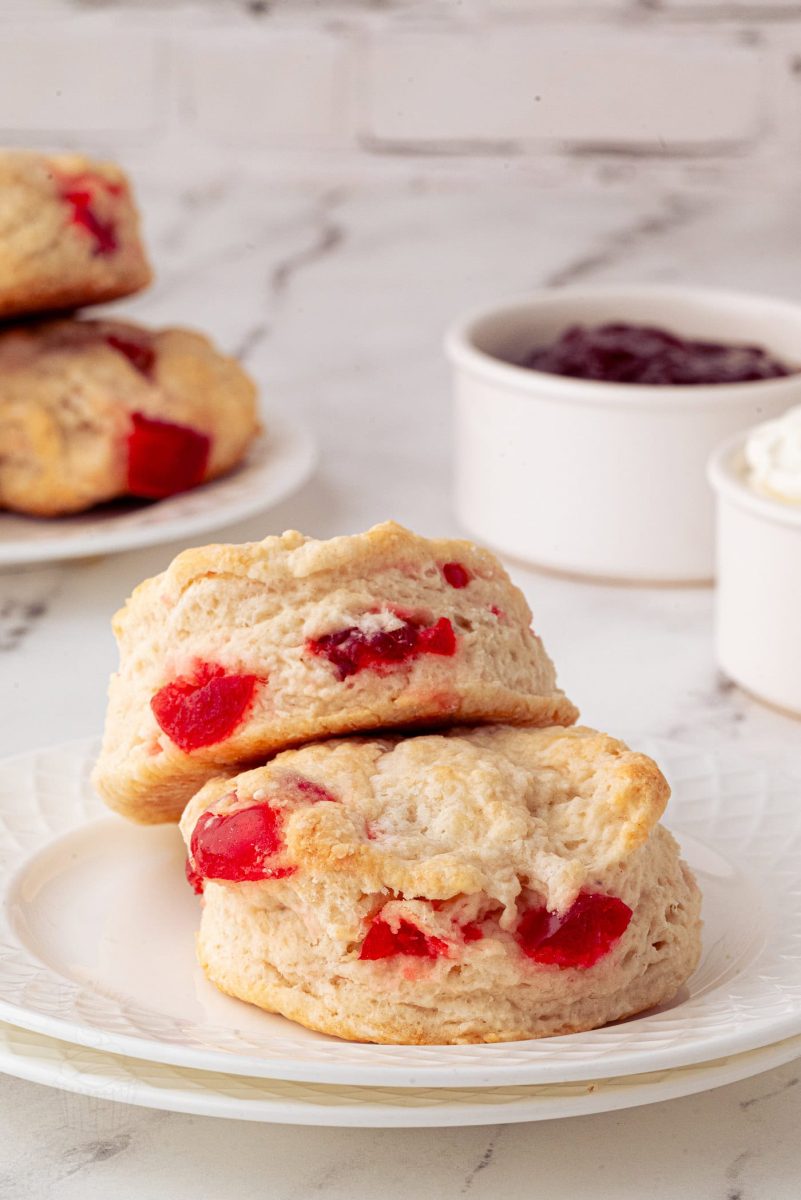
More Scones You'll Love:
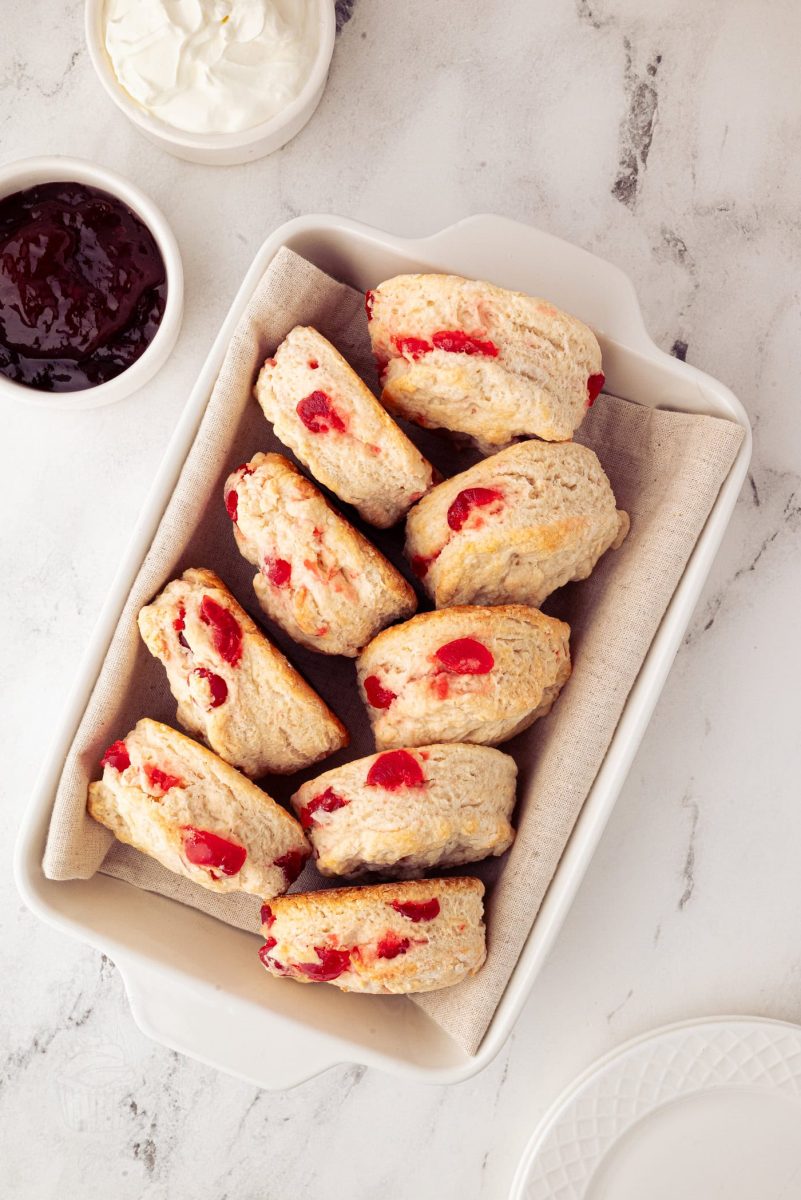
Tips for Scone Success:
• Cold Ingredients, Hot Oven: For great scones you want cold ingredients and a hot oven. Use margarine/butter that is a little cold and ensure you fully pre-heat your oven.
• Sift the Flour: Try to get as much air into your dough by sifting the dry ingredients from a bit of height and raising your fingers as you rub in the butter.
• Be Gentle with the Dough: Scones require a soft touch, so don’t be too rough with your mixing and kneading.
• Put Down the Rolling Pin! Simply stretch out your dough with your hands. And always leave it a little thicker than you think you should.
• Don’t Twist the Cutter: When you cut your scones from the dough, DO NOT twist your cookie cutter. This will twist the edges of the dough and prevent them from rising as well.
• Give Them a Rest: Always leave your scones to rest before baking. This lets the gluten in the flour rest & calm down a little. 10 minutes is ideal, but even better if you can do longer. I’ll usually do my dishes during this time.
• Glaze Before Baking: A beaten egg gives the best colour to scones when brushed on top, but milk is my personal preference. Just be careful that you don’t let it run down the sides of your scones or it could effect the rise.
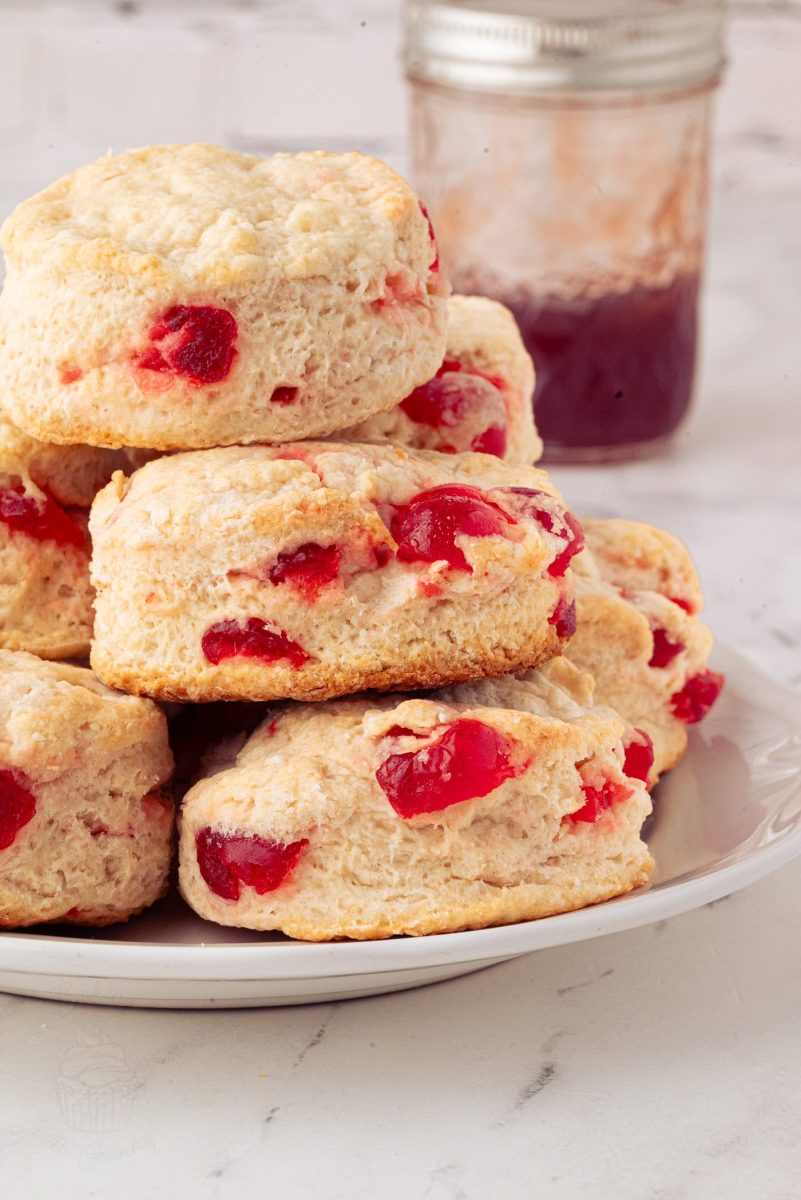

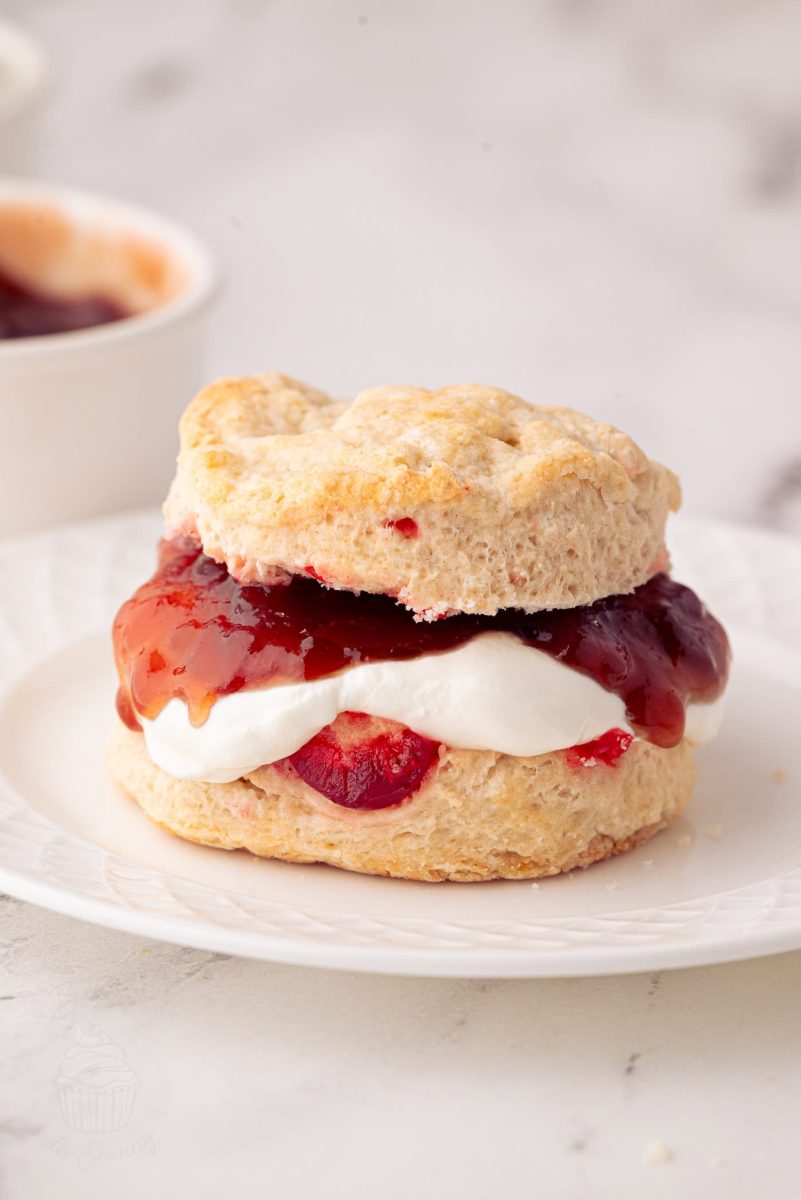
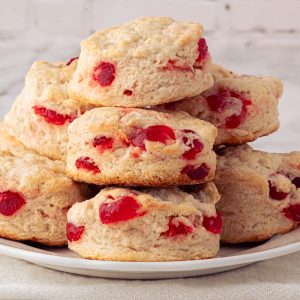
Cherry Scones
INGREDIENTS
- 450 g Self-raising Flour
- Pinch of Salt
- 2 tsp Baking Powder
- 50 g Caster Sugar (Superfine Sugar)
- 50 g Margarine or Butter
- 100 g Glacé Cherries (Candied Cherries) halved
- 200 ml Milk
- 100 ml Plain Yoghurt dairy, soya, coconut...
INSTRUCTIONS
- Pre-heat your oven to 220°c (200°c for fan assisted oven, Gas Mark 7 or 425°F). Grease two baking sheets with a little butter and set aside.
- Sift the flour, salt and baking powder into a large bowl, holding the sift up to allow some air into them.
- Gently stir in the sugar.
- Using the tips of your fingers, rub in the margarine/butter to the dry ingredients, again lifting as you do to allow air in. Continue until you have a sandy consistency.
- Stir in the cherries and create a well in the middle.
- Whisk the milk and yoghurt together before pouring into the well. Using your hands, gently bring the ingredients together to form a soft, slightly sticky dough.
- Turn out onto a floured work surface and gently knead together, before stretching the dough to about 2cm thickness.
- Using a cookie cutter of your choice, cut your scones out and place them onto your pre-greased baking sheets. The smaller your cutter the more scones you will get. Reform and stretch the dough as required to use all of the dough.
- Leave your scones to rest on the tray for about 10 minutes before brushing the tops with some extra milk.
- Bake in your pre-heated oven for 10 minutes. If you are making smaller scones, keep a close eye on them as you may need to reduce the baking time to suit.
- Once cool enough to touch, transfer to a wire rack to cool completely or enjoy whilst still warm.
IMPORTANT NOTE:
All my recipes are developed using a digital scale and the metric system (grams and millilitres). Cup measurements are available as a conversion but these, unfortunately, won't always be as accurate. For best results, I always recommend baking with a digital scale.
RECIPE NOTES:
- For full explanations on each ingredient and possible substitutions, see the Ingredients section above.
- For more tips for the perfect Cherry Scones, see Granny's Top Tips above.
- Cherry Scones are best enjoyed the day they are baked, but the can be stored in an airtight container for a few days. You can also reheat them (in the microwave or toaster) to bring them back to life a little.
- Cherry Scones freeze very well. Simply pop them into a freezer bag and remove them one at a time, as required. Allow them to come to room temperature before serving. You can also reheat them (in the microwave or toaster) to bring them back to life a little.
- For tips on how to make your Cherry Scones vegan or free-from, see the Free-from & Vegan box below.
Free-from & Vegan
Dairy-free: To make this a dairy-free scones recipe, simply use a dairy-free milk, yoghurt & margarine for a dairy-free scone.
Nut-free: There are no nuts used in this scone recipe but, as always, be sure to double check your individual ingredients allergens list.
Vegan: As there is no egg in this scone recipe, simply follow the dairy-free tips above to make these a vegan cherry scones recipe. The scones pictured are actually vegan, made with dairy-free margarine, soya milk and coconut yoghurt.
N.B. Any advice or suggestions to make recipes “free-from” or vegan are purely that – suggestions. Please be careful to double check all ingredients individually, taking extra caution when serving to those with allergies & intolerances.
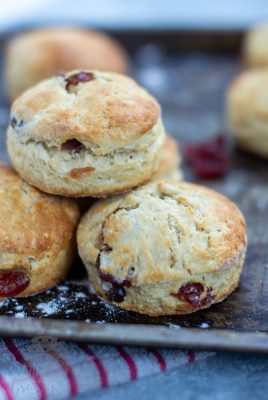
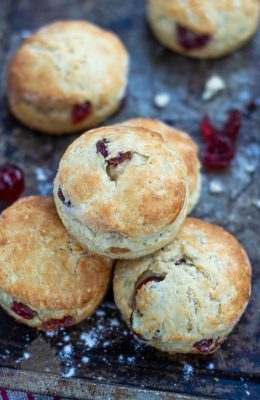
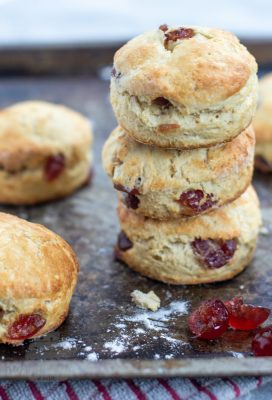
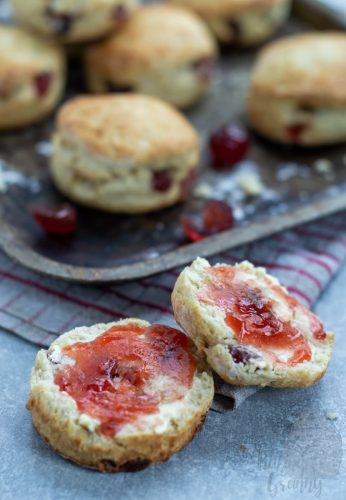
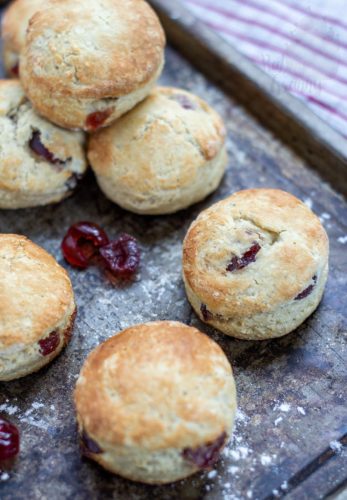
Originally published in February 2022. Updated in March 2025.
Thank you to Naomi Seiler for creating the updated photos.





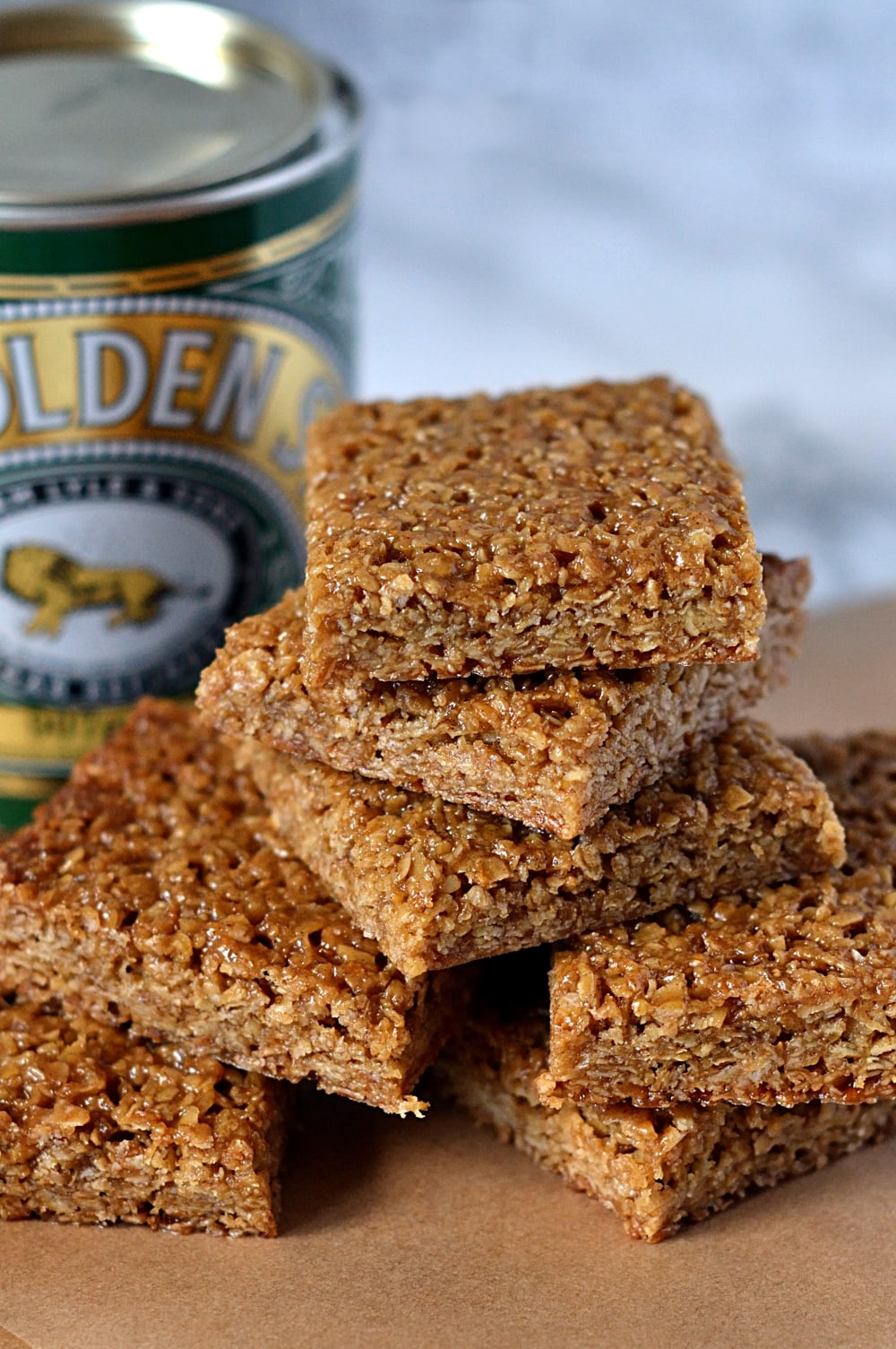

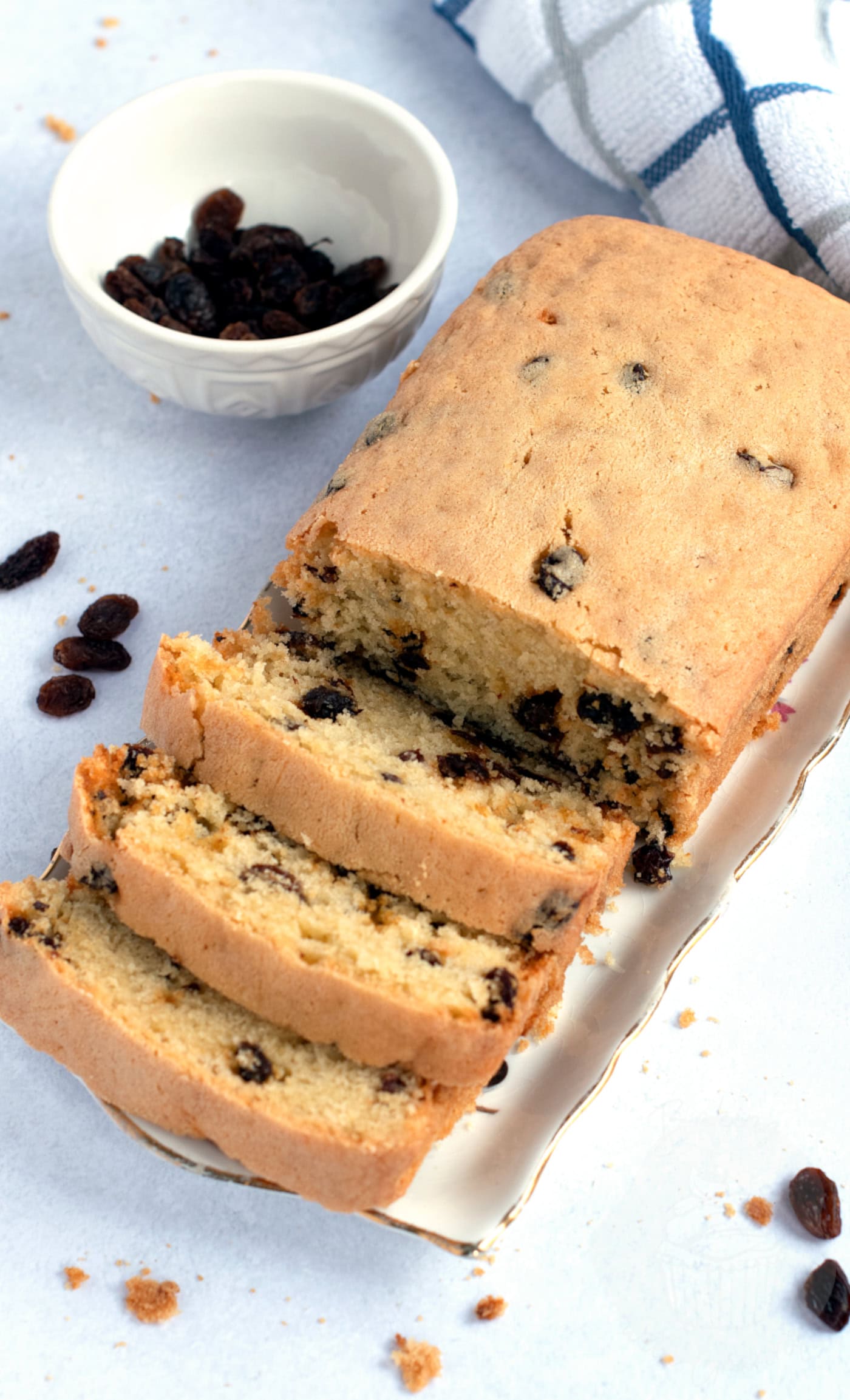
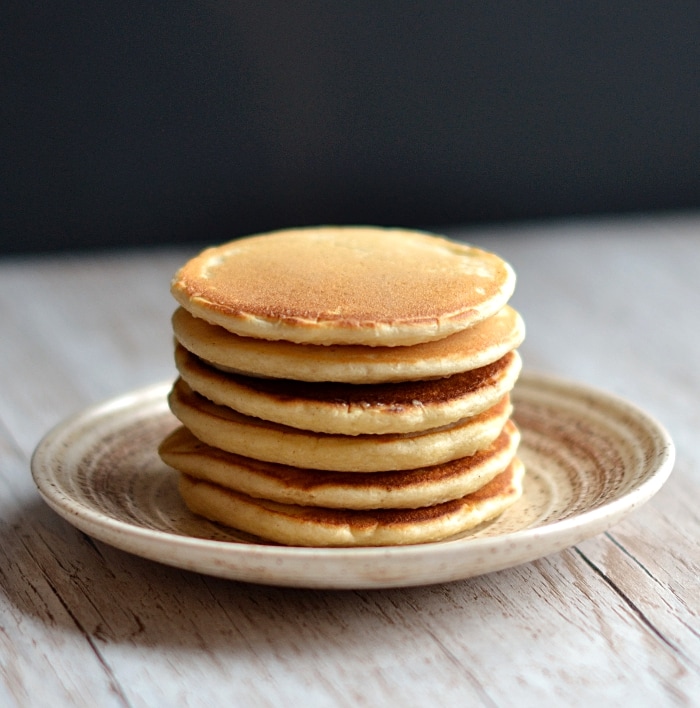
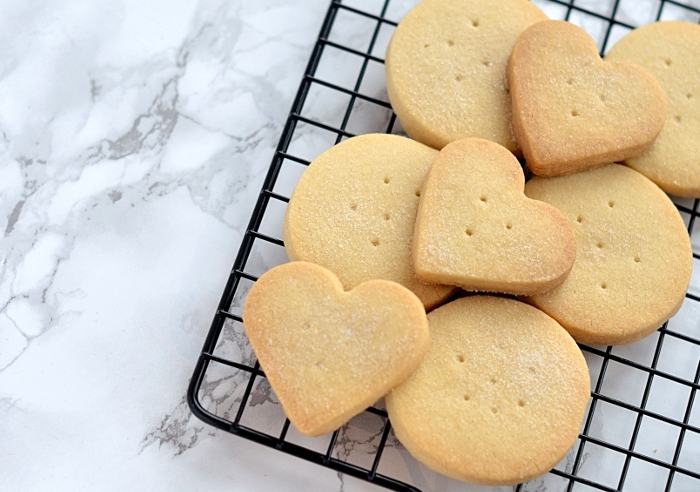








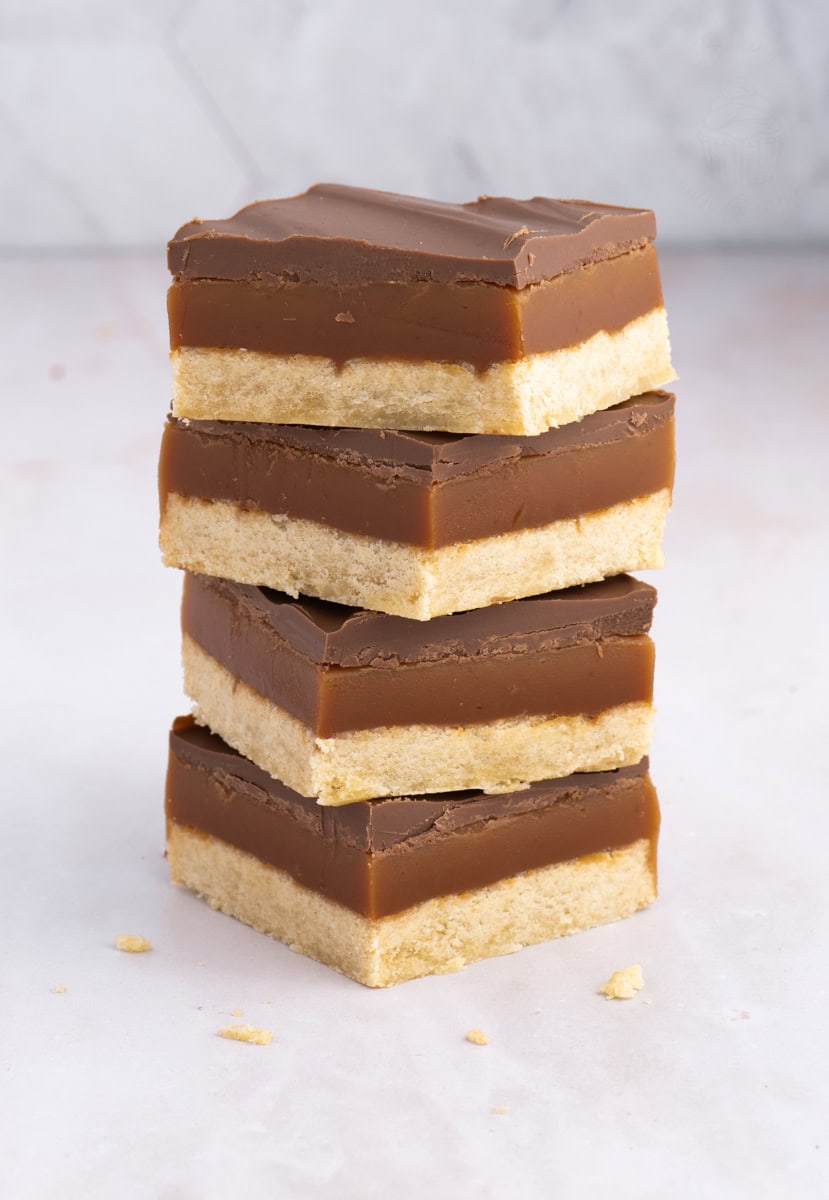
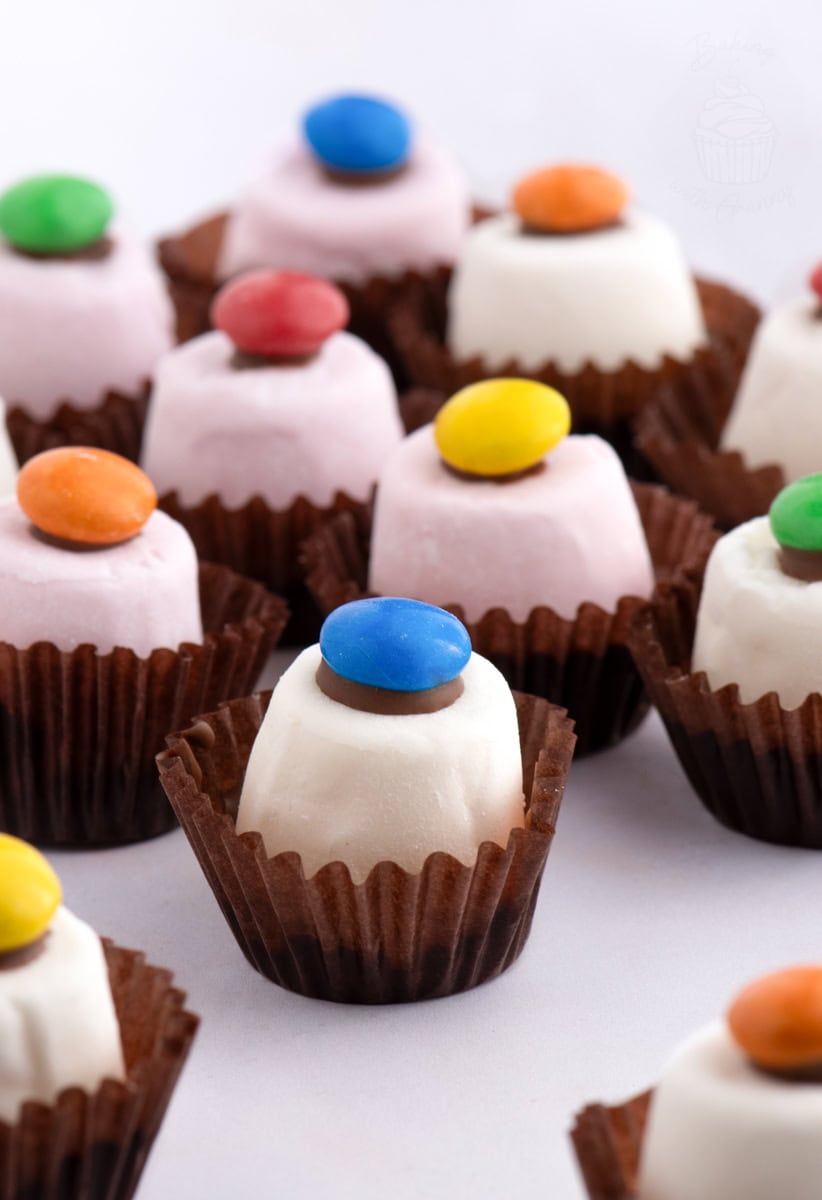
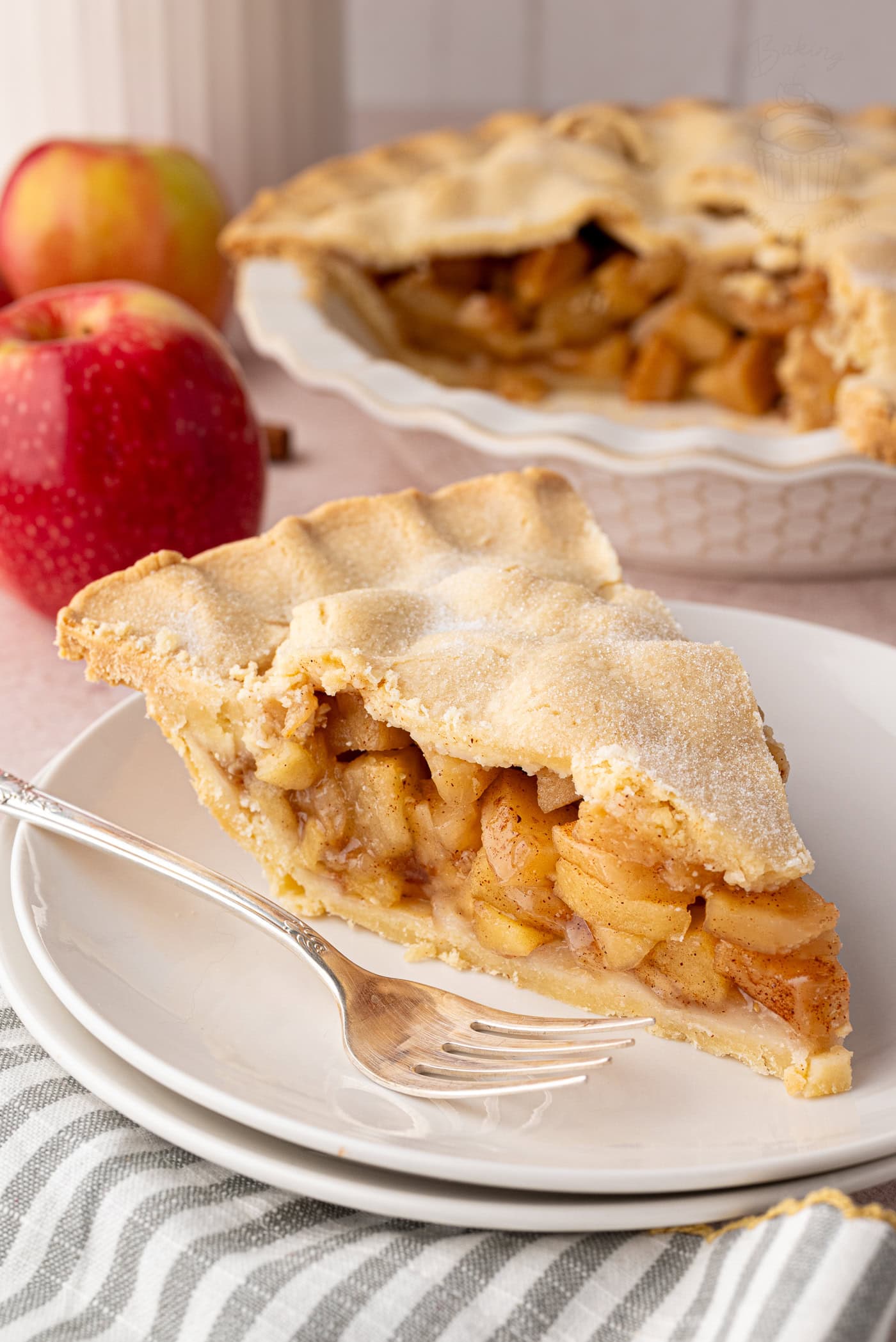
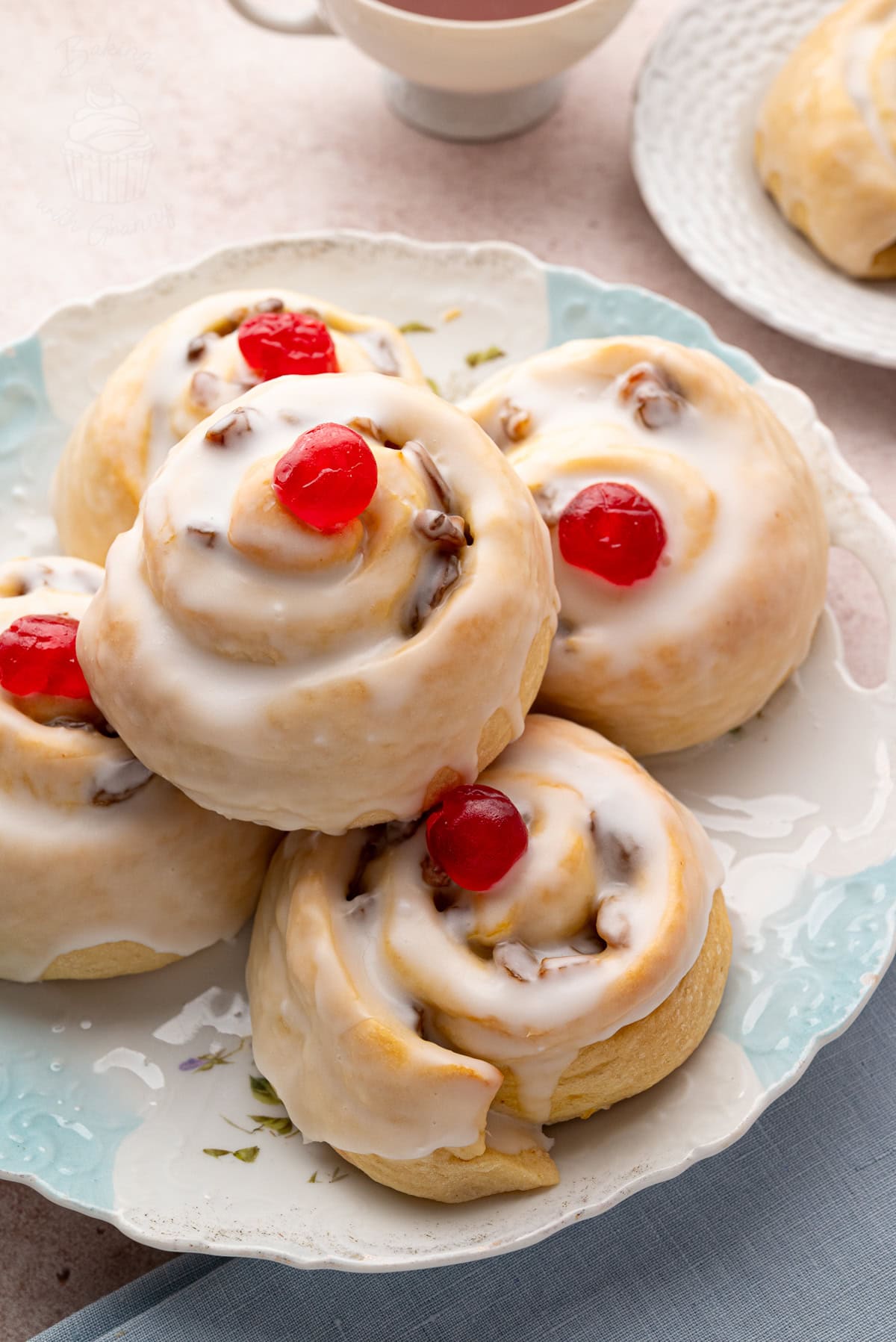

10 responses
What sort of yoghurt do you use?
Hi Catherine.
I wasn’t very clear on that, was I? I’ve now updated the ingredients and recipe to be more informative in regards to that.
To answer your question though, any plain yoghurt is fine. Dairy, soya, coconut… A yoghurt that isn’t too sweet or flavoured is perfect.
Thanks for that. Never used yoghurt in my scones before. Will give it a go.
I used 0% fat Greek yoghurt (all I had in the fridge at the time) and they were perfect.
I used 0% fat Greek yoghurt (all I had in the fridge at the time) and they were perfect.
Can I use double cream instead of milk? Thank you
If I don’t have yogurt do I need to increase the amount of milk?
For anyone calorie counting, these work out at 317 calories each. That’s for 8 scones.
I have been making scones for many years, using a Good Housekeeping recipe. I searched online for something different and I can honestly say that these are the best I have ever made.
Thank you so much.
Can you freeze these? Either before or after baking?